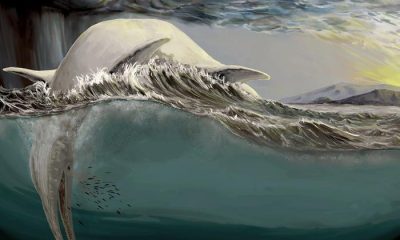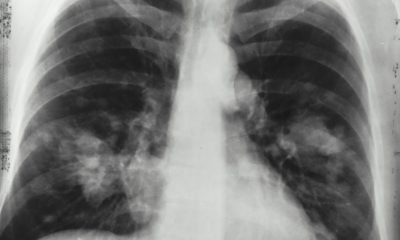By Jim Leffman via SWNS
Humans are largely hairless because although we have the genes for a full coat of hair, evolution has disabled them, a new study has revealed.
Scientists say the discovery could lead to ways to regrow hair in bald people, those undergoing chemotherapy or alopecia sufferers.
Researchers compared genetic codes from 62 different animals to find out why we were different from our ape cousins such as gorillas or orangutans.
Scientists from the University of Utah Health and University of Pittsburgh say their findings point to a set of genes and regulatory regions of the genome that appear to be essential for making hair.
We fall into the "hint of hair" category, those who have it but not a lot of it, along with elephants, pigs and mustachioed walruses.
The study in the journal eLife shows that nature has deployed the same strategy at least nine times in mammals that sit on different branches of the evolutionary tree.
Ancestors of rhinos, naked mole rats, dolphins, and other hairless mammals traveled the same path to deactivate a common set of genes in order to shed their hair and fur.
The team searched for genes in hairless animals that evolved at faster rates compared to their counterparts in hairy animals.
Dr. Nathan Clark, a human geneticist at the University of Utah Health, said: "As animals are under evolutionary pressure to lose hair, the genes encoding hair become less important.
“That’s why they speed up the rate of genetic changes that are permitted by natural selection.
"Some genetic changes might be responsible for loss of hair. Others could be collateral damage after hair stops growing.
“We have taken the creative approach of using biological diversity to learn about our own genetics.
"This is helping us to pinpoint regions of our genome that contribute to something important to us.”
Animals modify their hair covering for various reasons. Without dense hair, elephants cool off more easily in hot climates and dolphins can glide smoothly through the water.
The team developed computational methods that could compare hundreds of regions of the genome at once.
They surveyed 19,149 genes and 343,598 regulatory regions that were conserved across the dozens of mammalian species analyzed.
They discovered that hairless mammals have accumulated mutations in many of the same genes, including those that code for keratin and ones that build the hair shaft and allow hair growth.
Researchers also found there were regulatory regions of the genome that don’t code for structures that make hair but do influence the process indirectly, guiding when and where certain genes turn on and how much is made.
Their work also uncovered genes for which a role in sprouting hair had not yet been defined, highlighting a new set of genes that could be involved in growing hair.
This suggests that the less well-defined genes identified in the screening could be just as important for having or not having hair.
Dr. Amanda Kowalczyk from the University of Pittsburgh said: "There are a good number of genes where we don’t know much about them.
“We think they could have roles in hair growth and maintenance.”
Clark and colleagues are now using the same approach to define genetic regions involved in preventing cancer, extending lifespan, and understanding other health conditions.
He added: “This is a way to determine global genetic mechanisms underlying different characteristics."

 Parenting1 week ago
Parenting1 week ago
 Lifestyle1 week ago
Lifestyle1 week ago
 Wildlife3 days ago
Wildlife3 days ago
 Good News4 days ago
Good News4 days ago
 Health4 days ago
Health4 days ago
 Entertainment1 day ago
Entertainment1 day ago
 Animals8 hours ago
Animals8 hours ago
 Broadcast13 hours ago
Broadcast13 hours ago




















